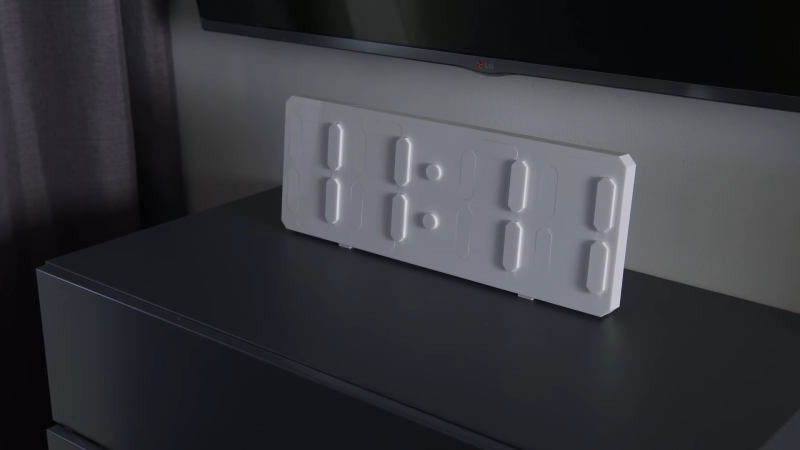There are plenty of conventional timepieces out there in the world; we’ve also featured a great many that are aesthetically beautiful while being unreadably esoteric. This neat “shadow clock” from [Smart Solutions for Home] is not conventional, but it’s still a clock you could use every day.
The display is made of four seven-segment digits, which have a subtle appearance. Each segment uses a solenoid to extend it forward out of the display, or to retract it flush with the faceplate. This creates a numerical display in all one color, with the physical protrusion doing the job of making the numbers visible. This is perhaps where the “shadow clock” name comes from, though you notice the protruding segments moreso than the shadows they cast on the faceplate.
Running the show is an ESP32, paired with H-bridges to drive the solenoids that make up the 7-segment displays. The H-bridges are driven via shift registers to reduce the number of GPIO pins needed. Unlike many other ESP32 clock builds, this one uses a DS3231 real-time clock module to keep accurate time, rather than solely relying on Internet-based NTP time servers. Configuring the clock can be done via a web interface. Design files are available online.
If you think you’ve seen this recently, maybe you’re thinkig of this prototype for a very similar display by [indoorgeek]. And that’s not the only way to make shadow clocks either. After all, the term is not enforced or defined by any global horological organization. Maybe that’s a good thing! Video after the break.















looks a little like a license plate. an arbitrary license plate renderer would be super handy for the ultimate getaway car
All you need is a credit card and a smart phone
https://reviver.com/
You could just use some double sided tape, between a stack of plates on your real plate. It’ll fall off as you drive. Problem solved.
The perfect fit of EDM on a block of brushed stainless steel would take this clock to the next level.
Yeah, totally! I’ve thought about it too, but EDM machines cost an absolute fortune! It’s gonna be a long while before I can afford one ;)
But you’re 100% right — it would look freaking amazing!
If you do special effects for movies you can budget it in – and then take it home afterwards :)